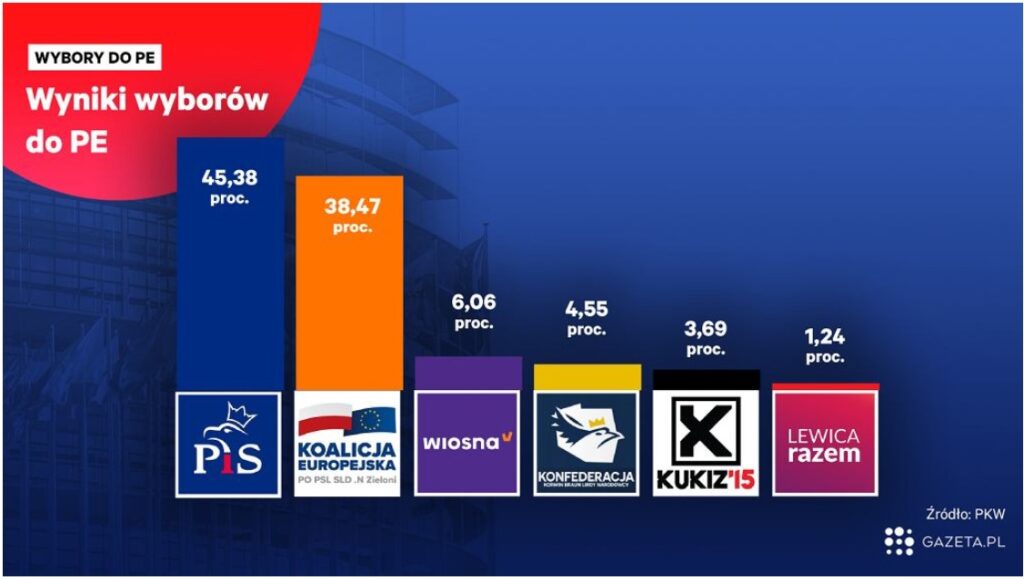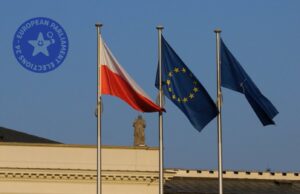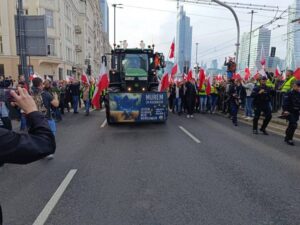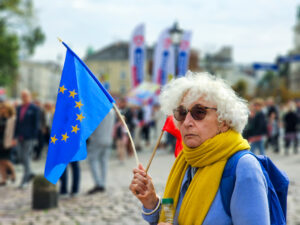The ruling Law and Justice Party (PiS) won a significant victory in the European elections in Poland, strengthening its position in the run up to this autumn’s national parliamentary elections. This was despite the fact that many of the opposition parties stood in a single coalition against PiS. The remaining left and liberal parties were marginal.

PiS (Law and Justice Party) has managed to maintain its dominant position in Poland because it is seen as being the party that best protects the living standards of the majority of the population. Since winning power in 2015, it has introduced a series of social welfare reforms, including the granting of a new child benefit that has helped to reduce child poverty by a half. In the run up to the European elections it widened this benefit, provided a one-off payment to pensioners and pledged to increase benefits for farmers. Although the elections took place in the wake of a teachers’ strike and demonstrations by farmers, PiS were still seen as the most ‘pro-social’ party in these elections.
The main opposition to PiS was the European Coalition (KE), organised around the Citizens’ Platorm party (PO), which included the liberal Modern party, the Democratic Left Alliance (SLD), the agrarian Polish People’s Party (PSL) and the Greens. This coalition stood on a negative programme of opposing PiS, claiming that it was defending European values and democracy and that PiS wanted to take Poland out of the European Union.
These elections were dominated by issues such as LGBT+ rights and revelations of sexual abuse in the Church. PiS were able to maintain a united and consistent position on issues such as the expansion of LGBT+ rights in Poland. However, KE were divided between its conservative and liberal wings on such matters, which PiS were easily able to expose. KE also had no positive economic or social programme, and were unable to offer any credible alternative to the policies of PiS.
The overall vote for PiS rose by more than 13 percent, in comparison to the last European elections in 2014, gaining 45.38 percent of the vote. Meanwhile KE only won 38.47 percent, which was down more than 10 percent compared to 2014. This victory for PiS is even more impressive due to the fact that the turnout in these elections was two times higher than in 2014 (rising from 23.83 percent to 45.68 percent). There has therefore been a huge growth in the number of citizens participating in the democratic process, with the largest proportion of these new votes going to the ruling party.
The incoherence of KE’s political campaign and message was particularly evident in the countryside. PiS essentially won these elections in the countryside and small towns where it gained 56.3 percent and 36.4 percent of the vote (in contrast it only received 27 percent in cities with a population of more than 500 thousand). Its main political rival in the rural regions, the PSL, was neutralised and its electorate demobilised partly due to its participation in KE. This left the field open to PiS, allowing it to advance its aim of becoming the recognised leading party in rural areas.
Likewise, the participation of the SLD in KE ensured that there was no strong independent left-wing alternative to PiS. This has bolstered the pro-social image of PiS and helped it to deepen its political support amongst some of the most disadvantaged sections of society. PiS therefore won over two-thirds of the votes from those with a basic or technical education, over 70 percent of the vote from farmers, 56 percent manual workers, 53 percent pensioners and 51 percent of the unemployed.
Outside of KE, two parties connected to the left stood independently. The social liberal party Spring (Wiosna) had been created a few months before these elections, around its leader Robert Biedroń. The party united liberals and social democrats and saw the European elections as an opportunity to launch themselves as serious contenders in this year’s parliamentary elections. However, the party only managed to win 6.06 percent of the vote, winning three MEPs. Meanwhile, the Left-Together (Left-Razem), a coalition of small left-wing currents around the party Razem, stood on a left-wing social democratic programme. However, Razem has failed to build on the three percent it won at the parliamentary elections four years ago, and only won 1.24 percent in these elections. Standing as part of KE, the SLD won five seats in the European parliament and alongside those MEPs from Spring will join the Socialists and Democrats group.
One piece of positive news to come out of these elections was the defeat of the far-right. The far-right were united as Confederation (Konfederacja), a coalition of the extreme nationalists from the National Movement and far-right neo-liberal party Korwin. This party only won 4.55 percent of the vote and alongside the populist Kukiz’15 failed to win any seats in the European Parliament.
The European elections have bolstered the chances of PiS winning a second term in office at the national parliamentary elections this Autumn. Meanwhile, the opposition strategy of uniting only against PiS, with no positive coherent programme of its own, has not brought any positive results. Meanwhile the left still remains weak and divided, with the major centre-left party, the SLD, incorporated into a coalition with the liberal centre-right. The left should seek to stand as one independent bloc in the parliamentary elections, which would be the best way of ensuring the left is represented independently in the Polish parliament.


